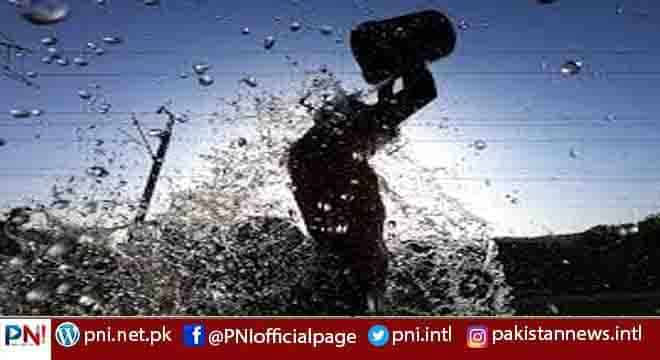ISLAMABAD, May 15 (APP): A recent study has revealed four cities which are likely to get hotter than usual by the end of 21st century due to climate change in the region.
The country is facing extreme weather changes for the past few decades which have affected certain regions more than others.
Experts, academicians, environmentalists and general public are concerned about the future climate of the region. “Hyderabad will likely become the hottest city of Pakistan by the end of the century with the highest average temperature reaching 29.9 degree Celsius under RCP4.5 and 32 degree Celsius under RCP8.5 followed by Jacobabad, Bahawalnagar, and Bahawalpur”, the report found.
The most of the hottest cities were detected in areas on the southern side of Pakistan whereas the wettest cities, Murree, Balakot and Muzaffarabad, are located in the monsoon region. Dry conditions are likely to be prevalent in Dalbandin followed by Khanpur and Jacobabad under both RCPs, it said.
A research titled ‘identifying hotspot cities vulnerable to climate change in Pakistan under CMIP5 climate projections’ which was carried out by senior scientific officer of Global Climate Change Impact Studies (GCISC) Dr Shaukat Ali and co-authored by Rida Sehar Kiani under the Asia Pacific Network (APN) Japan funded project on extreme events.
The report identified hotspot cities in terms of temperature and precipitation and variation in the weather patterns. The study observed the four seasons winter (December–January–February), spring (March–April–May), summer (June–July–August), and autumn (September–October– November).
The identified hotspot cities underwent varied temperature and precipitation extremes. “The analyses focused on the minimum, maximum and average temperature and precipitation in three time-slices: 2006–2035, 2041–2070, and 2071–2,100.
Average temperature is projected to increase by 2.6 degree Celsius under RCP4.5 while 5.1 degree Celsius under RCP8.5 by the end of this century with the north side of Pakistan (mainly over North Pakistan (NP), Monsoon Region (MR) and Khyber Pakhtunkhwa (KP) presenting the highest changes in the temperatures”, the research underlined. It added that the wetter conditions or increased rainfall was predicted in the monsoon region of the country.
The research suggested that the impending impact of environmental degradation was likely to aggravate in the future that demanded the development of proper mitigation and adaptation strategies to avert the subsequent disasters. The study has revealed that there was significant warming in all the sub-regions of Pakistan whereas the highest increase in temperature was projected over the north region followed by the monsoon region.
“The top cities displaying the highest increase in future temperature also lies in the north region with Gupis, Drosh and Chitral on the top. This highest increase over the north can cause a threat to glacier or snow melting which can have a devastating impact on hydrology and socio-economic conditions of the area”, it warned.
“Global warming is associated with the sun’s energy trapped in the earth’s atmosphere due to the influence of greenhouse gases. Not unlike other places on the globe, it is and will affect Pakistan with warmer conditions”, it said.
Follow the PNI Facebook page for the latest news and updates.







